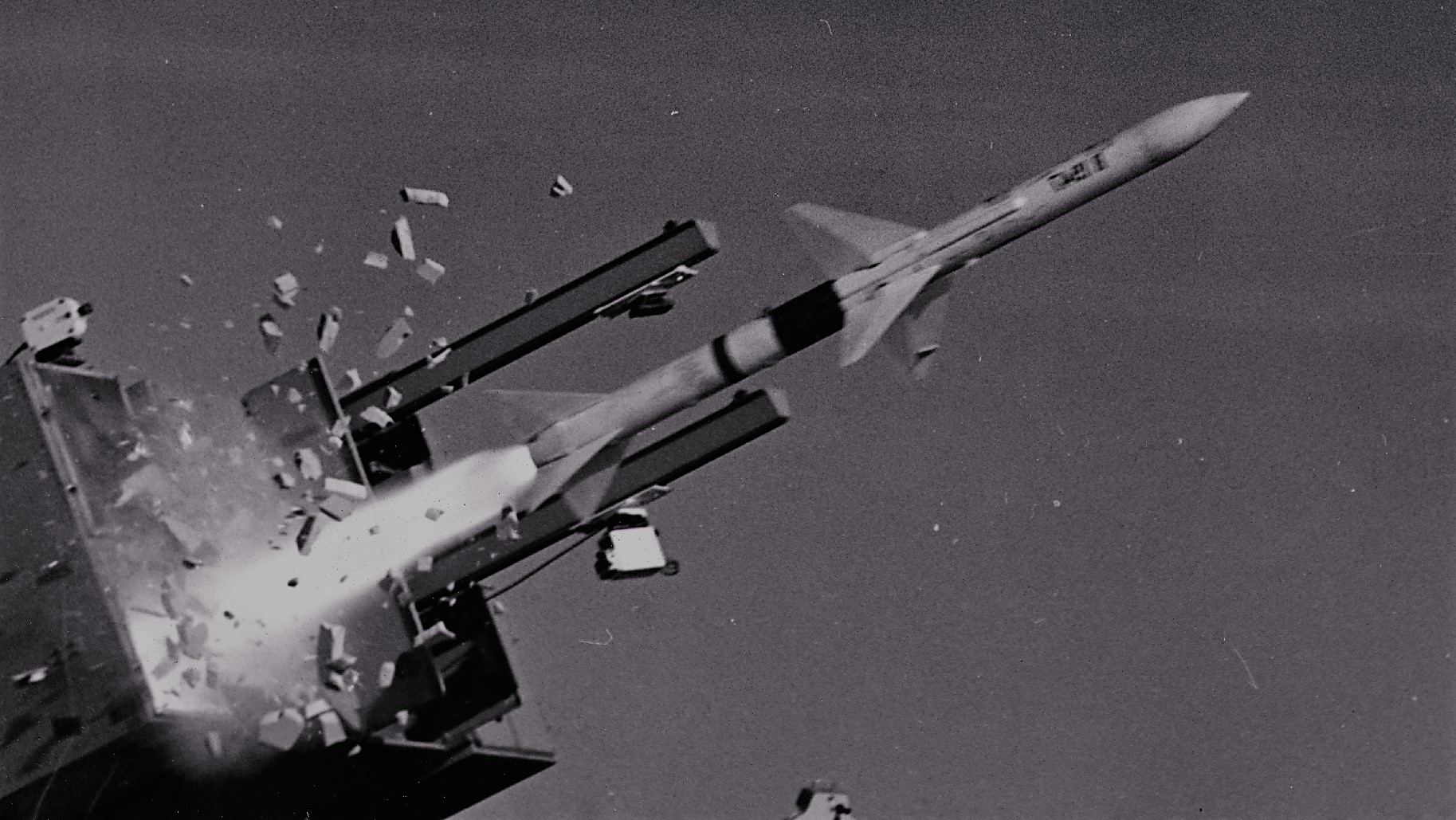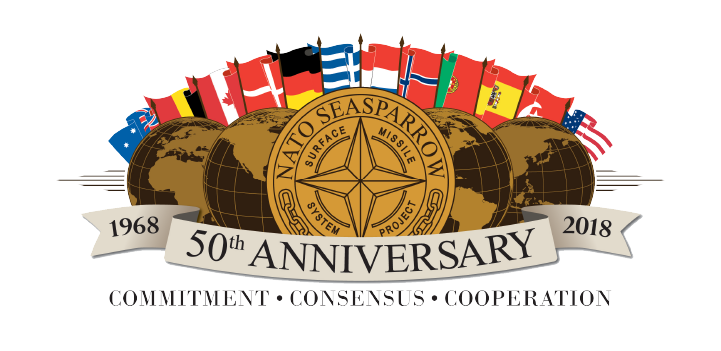
PROJECT NEWS

Pacific Ocean – A SEASPARROW missile is launched through a frangible door on board the guided missile ship USS Norton Sound (AVM-1) during a sea test. 11 December 1968. Copyright: National Archives & Records Administration

June - 2018 // NATO SEASPARROW PROJECT CELEBRATES 50 YEARS
Arlington, VA – Five decades after the creation of the NATO SEASPARROW Missile Consortium, the member nations are still delivering combat-relevant capability.
The ship-launched RIM-7 NATO SEASPARROW missile, designed to protect ships from air and missile attack, was developed from the air-launched AIM-7 Sparrow missile used by the U.S. Air Force and Navy during the Vietnam War as well as numerous other countries. More than 25,000 of different variants were produced.
The NATO SEASPARROW Project began with four founding members: Denmark, Italy, Norway, and the U.S. Today there are 12 member nations. From the beginning, the consortium has sought to improve the system. While the original NATO SEASPARROW Surface Missile System was a stand-alone weapon, nations developed combat management systems and launchers to integrate the missile into existing or new combat capabilities.
In 1991 the missile was upgraded to become the RIM-162 Evolved SEASPARROW Missile (ESSM), and a new version called ESSM Block 2 is under development.
According to Capt. Bruce Schuette, the NATO Sea Sparrow Project Officer, there is significant progress being made, to include development of software-defined combat systems and the missiles themselves, but also the development and fielding of robust modeling and simulation tools that will allow the consortium to understand to a great degree of fidelity the ship systems and missiles capability against the current and emerging threats. “Related to that is the evolution of the ESSM Block 2, which will provide the consortium nations a weapon with game changing capabilities with its active seeker and the potential to be reprogrammed at the missile level in the field.”
Ten of the 12 SEASPARROW Consortium members participate in the ESSM Block 2 development program, including Australia, Canada, Denmark, Germany, Greece, Norway, Spain, Turkey, Netherlands, and the United States. Belgium will join the other ten in late 2018.
The program is truly international. Each nation has an appointed member of the steering committee, which typically meets twice a year, and a national deputy assigned to the project office in Crystal City, Va. Raytheon Missile Systems is the design agent and prime contractor, but the missile has significant industrial participation from member nations.
“Fifty years of cooperation indicates remarkable stability for a complex cooperative project,” said Schuette.
Courtesy of Surface SITREP, published by the Surface Navy Association (www.navysna.org).

Pacific Ocean – A SEASPARROW missile is launched through a frangible door on board the guided missile ship USS Norton Sound (AVM-1) during a sea test. 11 December 1968. Copyright: National Archives & Records Administration

October - 2017 // NATO SEASPARROW PROJECT CONDUCTS SUCCESSFUL FLIGHT TEST OF ESSM BLOCK 2
POINT MUGU, Calif. – The first Evolved SEASPARROW Missile Block 2 firings were conducted at the Pt. Mugu Sea Range off the coast of California, June 12-13, 2017.
Representatives from the NATO SEASPARROW Project Office, U.S. government technical support agencies, and Raytheon Missile Systems conducted Controlled Test Vehicle (CTV) firings from the Self-Defense Test Ship.
These flights were unguided and intended to prove the missile could be fired safely and follow a pre-programmed course. The first CTV flight profile included a high elevation launch, simulating egress from a vertical launcher. The second CTV firing included a low-elevation trainable launcher profile launch.
Both CTV flight test were highly successful. The next series of planned test flights will increase in complexity to demonstrate the progress of ongoing development.
October - 2017 // NATO SEASPARROW PROJECT CONDUCTS SUCCESSFUL FLIGHT TEST OF ESSM BLOCK 2
POINT MUGU, Calif. – The first Evolved SEASPARROW Missile Block 2 firings were conducted at the Pt. Mugu Sea Range off the coast of California, June 12-13, 2017.
Representatives from the NATO SEASPARROW Project Office, U.S. government technical support agencies, and Raytheon Missile Systems conducted Controlled Test Vehicle (CTV) firings from the Self-Defense Test Ship.
These flights were unguided and intended to prove the missile could be fired safely and follow a pre-programmed course. The first CTV flight profile included a high elevation launch, simulating egress from a vertical launcher. The second CTV firing included a low-elevation trainable launcher profile launch.
Both CTV flight test were highly successful. The next series of planned test flights will increase in complexity to demonstrate the progress of ongoing development.